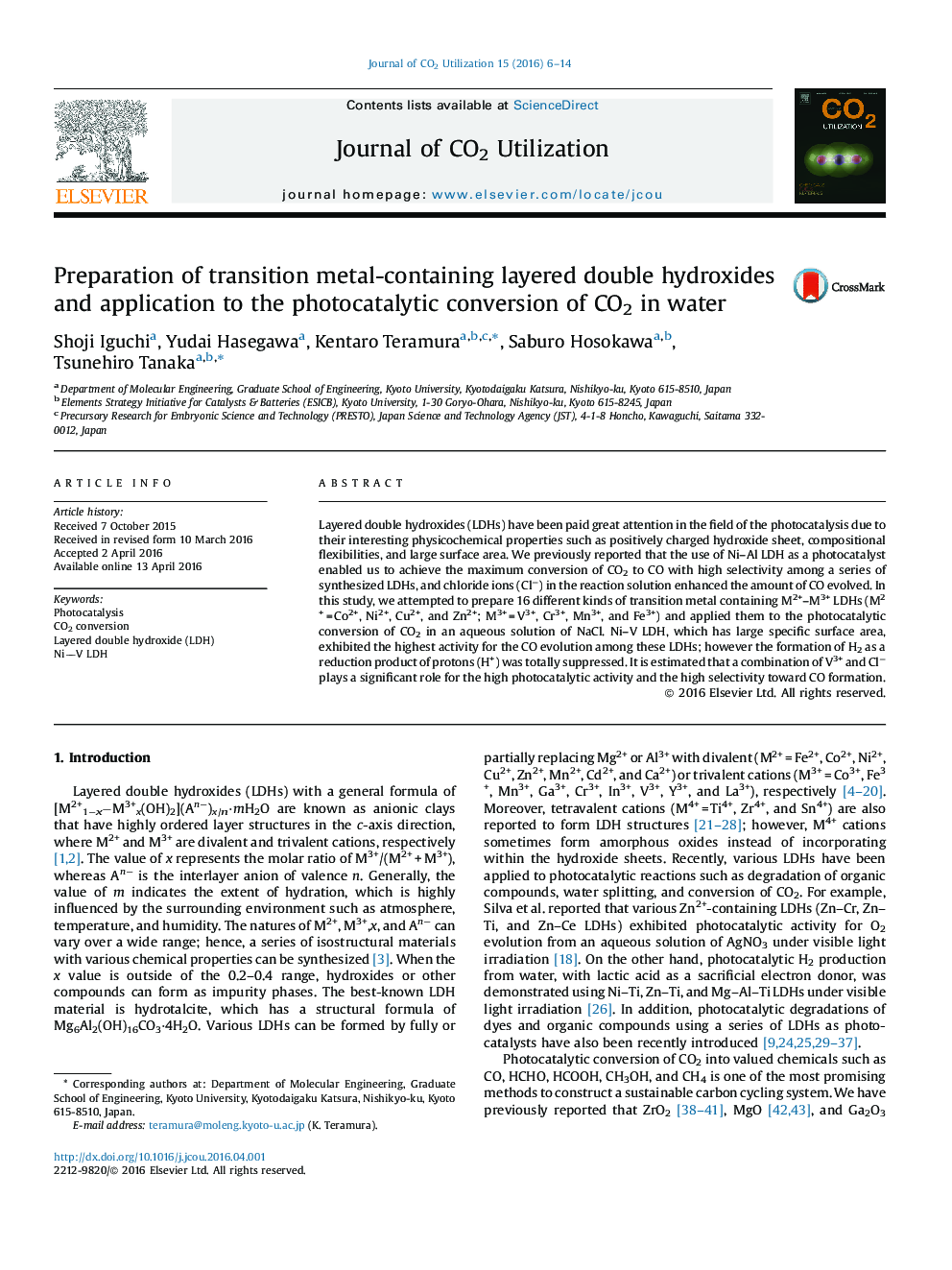| Article ID | Journal | Published Year | Pages | File Type |
|---|---|---|---|---|
| 6456358 | Journal of CO2 Utilization | 2016 | 9 Pages |
â¢NiV layered double hydroxide (LDH) exhibited the highest activity for the photocatalytic conversion of CO2.â¢NiV LDH evolved over 200 μmol of CO as a reduction product of CO2 after 8 h of photoirradiation.â¢H2 production via a reduction of protons (H+) was totally suppressed when NiV LDH was used as a photocatalyst.
Layered double hydroxides (LDHs) have been paid great attention in the field of the photocatalysis due to their interesting physicochemical properties such as positively charged hydroxide sheet, compositional flexibilities, and large surface area. We previously reported that the use of Ni-Al LDH as a photocatalyst enabled us to achieve the maximum conversion of CO2 to CO with high selectivity among a series of synthesized LDHs, and chloride ions (Clâ) in the reaction solution enhanced the amount of CO evolved. In this study, we attempted to prepare 16 different kinds of transition metal containing M2+-M3+ LDHs (M2+Â =Â Co2+, Ni2+, Cu2+, and Zn2+; M3+Â =Â V3+, Cr3+, Mn3+, and Fe3+) and applied them to the photocatalytic conversion of CO2 in an aqueous solution of NaCl. Ni-V LDH, which has large specific surface area, exhibited the highest activity for the CO evolution among these LDHs; however the formation of H2 as a reduction product of protons (H+) was totally suppressed. It is estimated that a combination of V3+ and Clâ plays a significant role for the high photocatalytic activity and the high selectivity toward CO formation.
Graphical abstractDownload high-res image (110KB)Download full-size image
